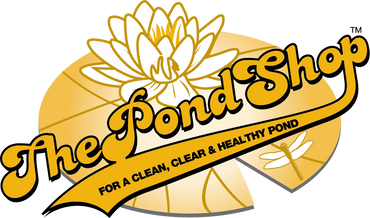Natural Pond Treatments: How Beneficial Bacteria Keep Your Pond Clean and Healthy
Maintaining a beautiful and balanced pond isn’t just about appearances — it’s about creating a thriving ecosystem. One of the most effective and eco-friendly ways to care for your pond is by using natural treatments with beneficial bacteria. These microscopic powerhouses play a vital role in keeping your water clear, reducing sludge, and maintaining a healthy environment for fish and plants. Let’s explore why beneficial bacteria are essential and how they can transform your pond.
What Are Beneficial Bacteria?
Beneficial bacteria are naturally occurring microorganisms that help break down organic waste, such as fish waste, decaying plants, and excess nutrients. When these materials accumulate, they can lead to murky water, foul odors, and harmful algae blooms. By introducing beneficial bacteria, you accelerate the natural decomposition process, keeping your pond cleaner and healthier.
Benefits of Beneficial Bacteria for Ponds
-
Clearer Water Beneficial bacteria consume decaying organic materials that sometimes become suspended in the water, which results in clearer water. These bacteria also consume excess nutrients like nitrogen and phosphorus, which algae feed on. By reducing these nutrients, bacteria help prevent algae growth, which also results in clearer, more attractive water.
-
Reduced Sludge Buildup Organic debris that sinks to the bottom of the pond forms sludge over time. Beneficial bacteria break down this sludge, minimizing buildup and preventing the release of harmful gases that can disrupt the pond’s balance. For a highly concentrated formulation of beneficial bacteria that is specifically designed for muck reduction, we recommend L.S.C.(Liquid Super Concentrate) Muck Reducer. L.S.C. can remove up to 12 inches of muck from the bottom of your pond or lake in a single treatment season.
-
Elimination of Foul Odors Decomposing organic matter can cause unpleasant smells. Beneficial bacteria speed up the breakdown of this waste, eliminating the odors and keeping your pond fresh.
-
Improved Oxygen Levels By reducing the amount of decaying material in the water, beneficial bacteria help maintain proper oxygen levels, which is essential for the health of fish and other aquatic life.
-
Eco-Friendly and Safe Unlike chemical treatments, beneficial pond bacteria are safe for fish, plants, pets, and people. They provide an environmentally friendly solution to maintaining a balanced pond ecosystem without introducing harmful substances.
How to Apply Beneficial Bacteria
Beneficial bacteria treatments typically come in liquid(Bio-Clear LQ), powder(Bio-Clear WSP contained in Water-Soluble Packets), or pellet(Bio-Buster Muck Reduction Pellets) form. Follow the manufacturer’s instructions for dosage and application frequency(these details can be found on each product page if you click the links in this paragraph). These beneficial bacteria can be used in water temperatures as low as 38°F, but for best results, apply bacteria when water temperatures are consistently above 50°F (10°C), as bacteria are most active in warmer conditions. For specially selected bacteria that are active in colder water temperatures(active in any water temperature), consider using Bio-Shock. Bio-Shock is the go-to solution for early season bacteria treatments, allowing you to boost the bacteria levels in early spring before nuisance weeds and vegetation begin growing.
Final Thoughts
Using natural pond treatments with beneficial bacteria is a simple yet powerful way to maintain a clean, healthy, and balanced pond. By promoting clearer water, reducing sludge, and supporting aquatic life, these natural solutions offer long-term benefits without the risks associated with harsh chemicals. If you’re ready to take a more eco-friendly approach to pond care, beneficial bacteria might just be the perfect solution.
